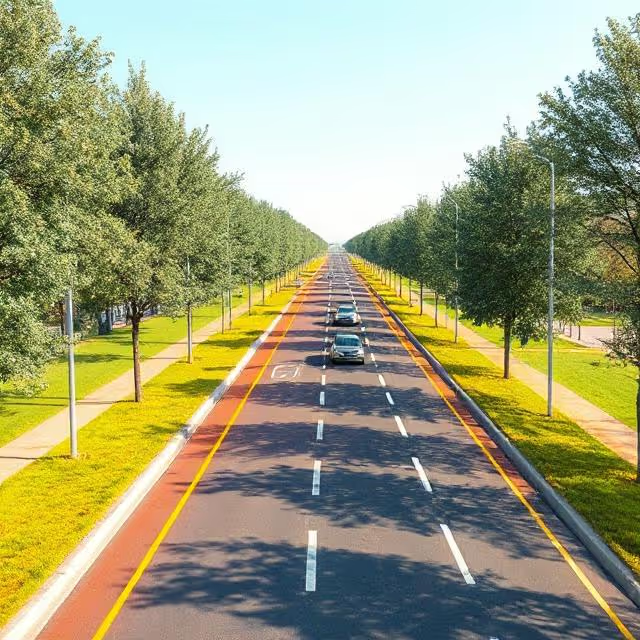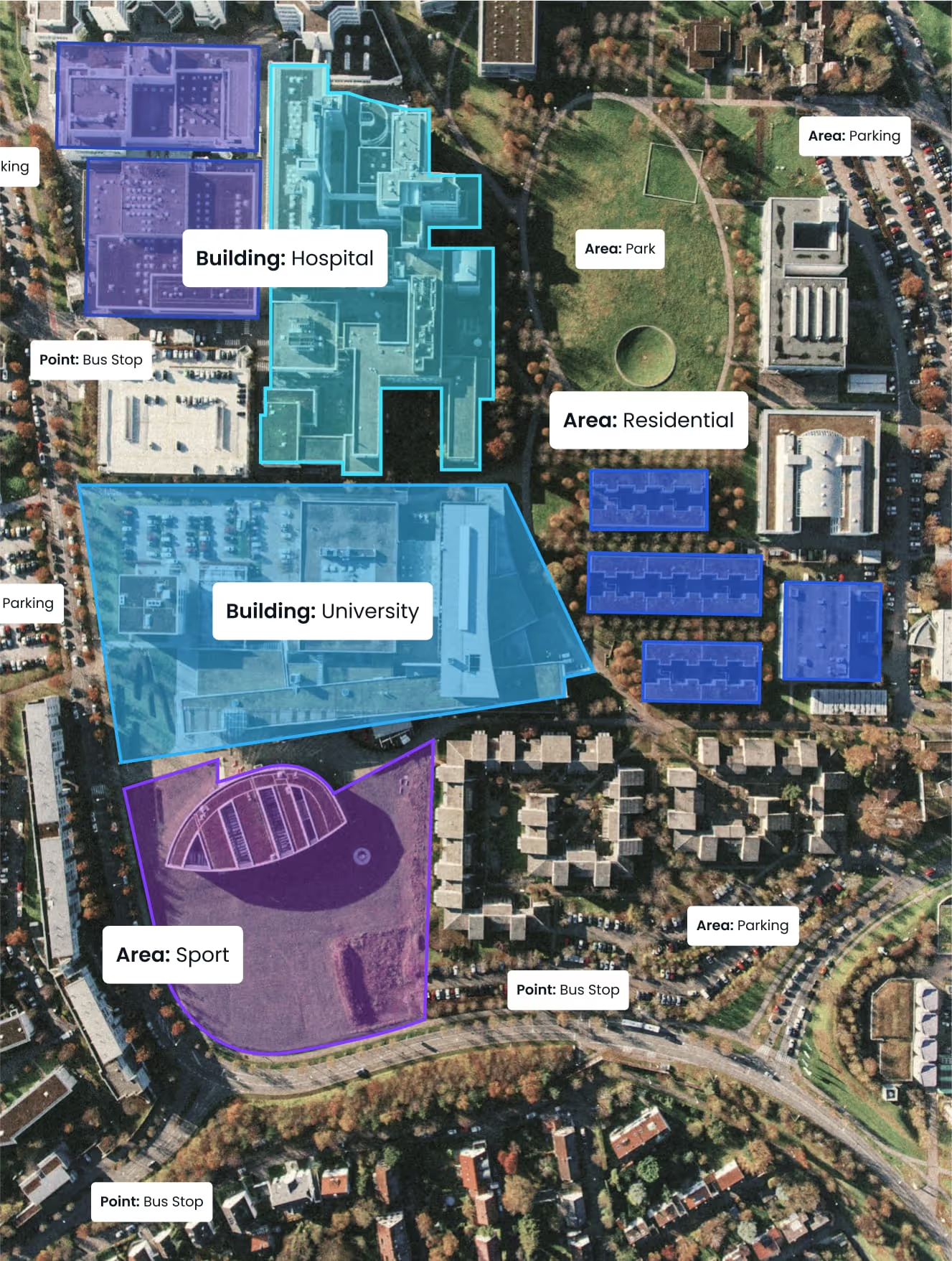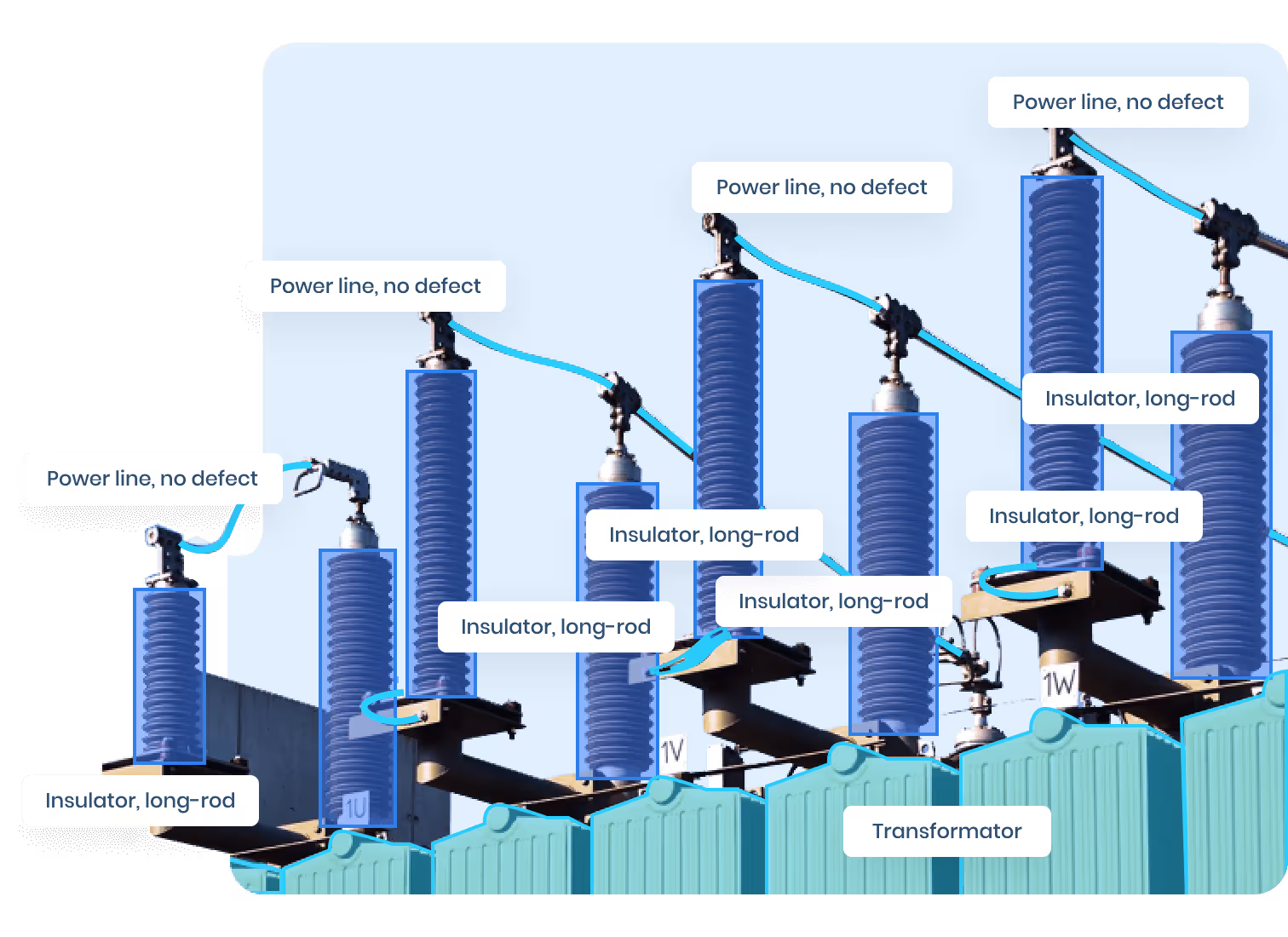Why Semantic Segmentation Matters in Self-Driving Systems 🧠
In the world of autonomous vehicles (AVs), perception is everything. One of the foundational layers of perception is semantic segmentation—a process where every pixel in an image is assigned a category such as road, vehicle, pedestrian, building, or vegetation.
Unlike object detection, which offers bounding boxes, semantic segmentation provides a richer, pixel-level understanding of the scene. This is crucial for:
- Lane following and road edge detection
- Obstacle avoidance in cluttered environments
- Urban navigation through complex intersections
- Precise trajectory planning
A well-labeled dataset directly correlates with safer decision-making by the AV. Poor segmentation can mean the difference between a car recognizing a sidewalk or mistaking it for drivable road.
For an overview of how segmentation fits into the AV stack, see this MIT CSAIL research overview.
Behind the Scenes: Why Annotating Roads Isn’t So Simple
It might sound easy to tell a machine: “This is the road, and that’s a tree.” But in practice, defining those boundaries pixel by pixel presents a series of unique difficulties.
Here’s why semantic segmentation for AVs is uniquely challenging:
Visual Ambiguity and Complex Classes
- Blended surfaces: Roads transition into shoulders, gravel paths, or bike lanes without clear boundaries.
- Edge fuzziness: Where exactly does a sidewalk end and a driveway begin? Humans can infer this from context—machines need exact definitions.
- Multi-layer elements: Overlapping features like road markings, oil stains, or shadows complicate annotation.
Environmental Variability 🌦️
Autonomous vehicles must drive in all conditions—not just on clear, sunny days. Annotators (and the models trained on their work) must contend with:
- Snow, rain, fog, and shadows
- Nighttime lighting and glare from headlights
- Seasonal changes that affect vegetation or road texture
The same stretch of highway can look completely different from one frame to the next.
Dynamic Urban Environments
City driving poses annotation challenges that rural environments often don’t:
- Construction zones: Temporary lanes, cones, or barriers introduce irregular classes
- Mixed traffic: Bikes, scooters, and pedestrians in the road space
- Reflective surfaces: Glass buildings and wet roads introduce misleading cues
A static annotation scheme rarely covers every scenario unless it's continuously updated.
Class Explosion and Label Drift: The Hidden Data Quality Problem
When “Road” Isn’t Just One Thing
In an ideal world, every pixel labeled as “road” would be consistent across your dataset. But in practice, we often see:
- Overlapping subclasses like:
- Asphalt road
- Painted markings
- Temporary construction road
- Brick roads
Annotators may vary in how they interpret these, especially without a rock-solid ontology. Over time, these inconsistencies can cause label drift—where the same object is labeled differently depending on who annotated it or when.
The Taxonomy Trap
Trying to cover every edge case by expanding the label taxonomy is tempting. But this often leads to:
- Excessively granular classes (e.g., "slightly damaged curb")
- Inconsistent use across annotators
- Sparse class representation, which hurts model generalization
A more effective approach is a carefully pruned ontology, with clear visual guidelines and examples. This enables high-quality labeling without sacrificing model performance.
For a deep dive into creating label taxonomies, see this Stanford paper on scene understanding datasets.
Geographic Bias in Road Datasets: A Silent Killer of Generalization 🌍
Training a model on only one region (say, U.S. highways) might work well for local driving, but it collapses when deployed elsewhere.
Here’s how geographic bias creeps in:
- Signage styles differ (European roundabouts vs. U.S. 4-way stops)
- Road coloring and material vary (asphalt, concrete, stone)
- Sidewalk widths, vegetation boundaries, and driving behaviors all shift subtly
To build robust AV perception systems, your segmentation data should include global diversity—from Tokyo’s dense intersections to rural roads in Kenya.
The Mapillary Vistas dataset is a great example of multi-country diversity in road scenes.
The Annotation Bottleneck: Speed vs. Accuracy
High-resolution Image Annotation at pixel level is incredibly time-consuming:
- Manual annotation of a single urban frame can take 30+ minutes
- Each frame may include dozens of label classes
- Real-world datasets often include tens of thousands of frames
To deal with this, companies often face a trade-off:
Speed Priority 🏃Accuracy Priority 🧐Semi-automated toolsManual QA layersLower per-frame costHigher reliabilityRisks model hallucinationsBetter model generalization
Some use a hybrid model, where initial labeling is done with weak AI models and then refined by humans.
For examples of successful hybrid pipelines, look at Scale AI and Labelbox's workflows.
The Issue with Class Imbalance and Rare Cases
In most road segmentation datasets, you’ll find an 80/20 split:
- Dominant classes: road, car, building
- Minor classes: cyclist, construction barrier, animal
Training on such imbalanced data leads to poor model performance on rare but critical edge cases—like a child crossing behind a parked van.
Solutions to tackle class imbalance:
- Class-balanced sampling during training
- Oversampling underrepresented frames
- Loss function tuning (e.g., focal loss or Dice loss)
And of course: actively mining edge cases from real-world driving logs and incidents to enrich training data.
Quality Assurance: Beyond Pixel Accuracy
Most QA metrics in semantic segmentation focus on IoU (Intersection over Union) or mean pixel accuracy. But those don't always capture scene coherence.
For example:
- A model might perfectly segment the road but label the curb as sidewalk.
- Tiny misclassifications at lane edges can cause trajectory deviation.
Advanced QA should include:
- Boundary sharpness checks
- Temporal consistency checks (across video frames)
- Human-in-the-loop visual inspection of failure cases
Companies like Deepen AI and Affectiva offer visual QA tools specifically for AV annotation workflows.
Emerging Trends in Semantic Segmentation for AVs
Self-Supervised Learning
To reduce the burden of manual annotation, some AV companies are investing in self-supervised learning, where models learn to segment scenes from raw, unlabeled video by exploiting spatial and temporal consistency.
For example, Waymo’s internal research includes methods for pseudo-label generation using multi-camera and lidar fusion.
Simulation-Driven Edge Case Collection
Rather than wait for rare events to appear in natural driving footage, teams are simulating them in virtual environments.
Tools like CARLA and NVIDIA’s DriveSim allow users to:
- Generate perfectly labeled segmentation masks
- Control lighting, weather, and agent behavior
- Scale dataset generation rapidly
This is particularly valuable for testing segmentation robustness under rare conditions (e.g., solar glare, sudden occlusion).
Key Industry Datasets and Benchmarks 🧪
For those building or evaluating semantic segmentation models for AVs, here are some industry-standard datasets worth exploring:
- Cityscapes: Focused on urban street scenes in Germany; pixel-accurate with rich class variety.
- BDD100K: From UC Berkeley, featuring 100K frames with a mix of driving scenarios, weather conditions, and class labels.
- Mapillary Vistas: Globally distributed dataset with high-resolution street-level images.
- ApolloScape: Chinese driving dataset with high class density and real-world road layouts.
- nuScenes: A full sensor suite dataset (Lidar + video) for holistic AV training pipelines.
Using these datasets in combination helps balance geographic bias, environmental conditions, and object class density.
Where Things Go Wrong: Real Stories from the Field
Even top-tier AV companies have hit snags due to segmentation errors. A few notable examples:
- Phantom Road Lanes: An AV system trained primarily on dry asphalt misinterpreted lane markings on a snow-covered road, drifting into oncoming traffic during tests.
- Invisible Curbs: A misclassified curb as drivable space led to the vehicle mounting the sidewalk in a low-light, wet road scenario.
- Construction Confusion: Temporary plastic barriers were mislabeled as pedestrians, leading the car to brake unexpectedly and disrupt traffic flow.
Each of these issues could be traced back to weak or inconsistent training annotations—proving that annotation quality is not a back-office problem, but a mission-critical component.
Getting It Right from the Start 💡
If you're building semantic segmentation datasets for Autonomous Driving, here are best practices to keep you on the right track:
- Define a tight, visual taxonomy: Avoid over-engineering your class list.
- Document everything: From labeling guidelines to visual examples.
- Train annotators like surgeons: Pixel accuracy matters—don’t skimp on training.
- Mix environments: Urban, rural, snow, night—segmentation models love diversity.
- Invest in QA early: Fixing bad annotations late in the pipeline is costly.
- Leverage simulation and synthetic data: It doesn’t replace real-world data, but it fills gaps and edge cases beautifully.
- Close the loop: Use model errors to refine your next round of data labeling.
Let’s Keep the Road Ahead Clear 🛣️
Autonomous driving can’t succeed without trustworthy, pixel-perfect scene understanding. And that understanding starts with you—the teams that build the datasets, define the taxonomies, QA the labels, and iterate relentlessly.
Whether you’re part of an AI startup, a labeling vendor, or an AV company’s perception team, your attention to annotation quality isn’t just about “better models.” It’s about safety, scalability, and real-world impact.
👉 Need help scaling semantic segmentation for your AV project? At DataVLab, we specialize in high-quality annotation services tailored for complex perception use cases. Let’s talk about how we can accelerate your journey to safer autonomy.
📌 Related: Image Annotation for Autonomous Vehicles: A Beginner’s Guide
📬 Questions or projects in mind? Contact us





